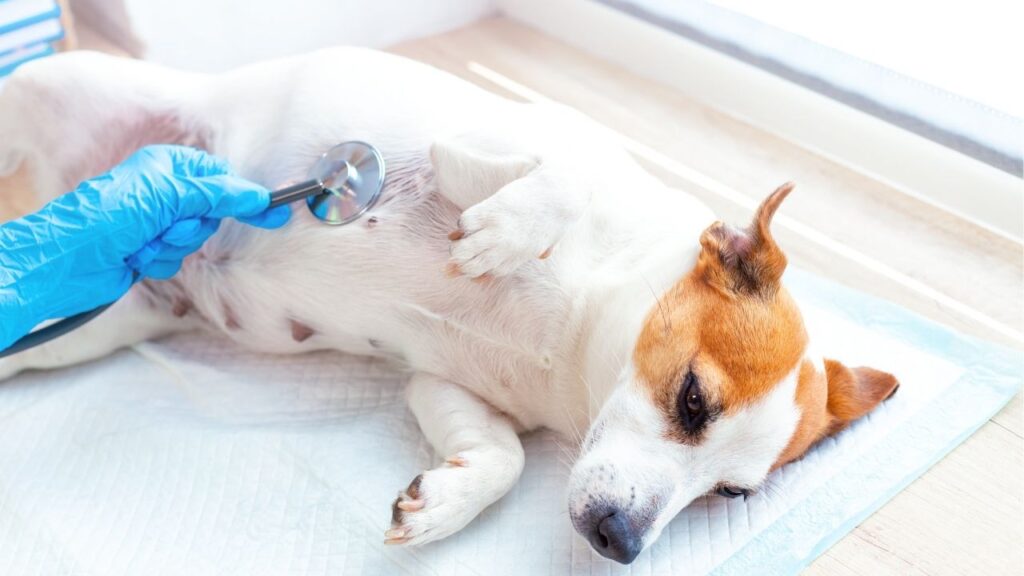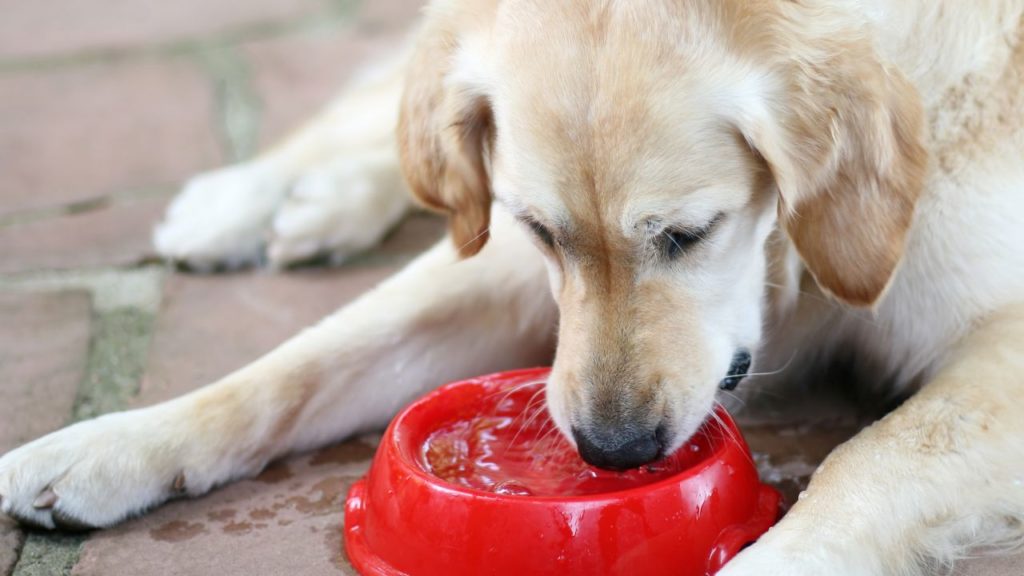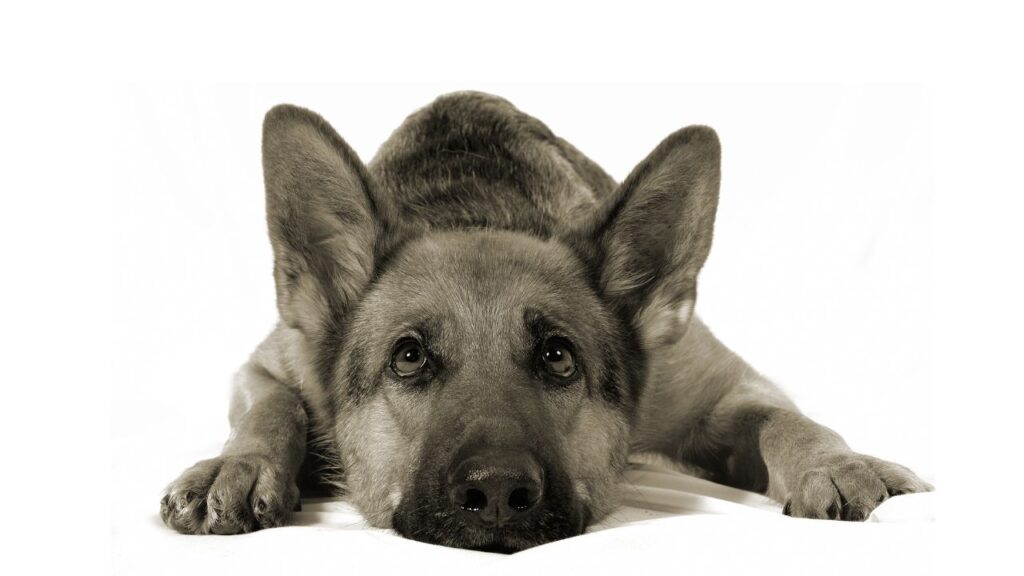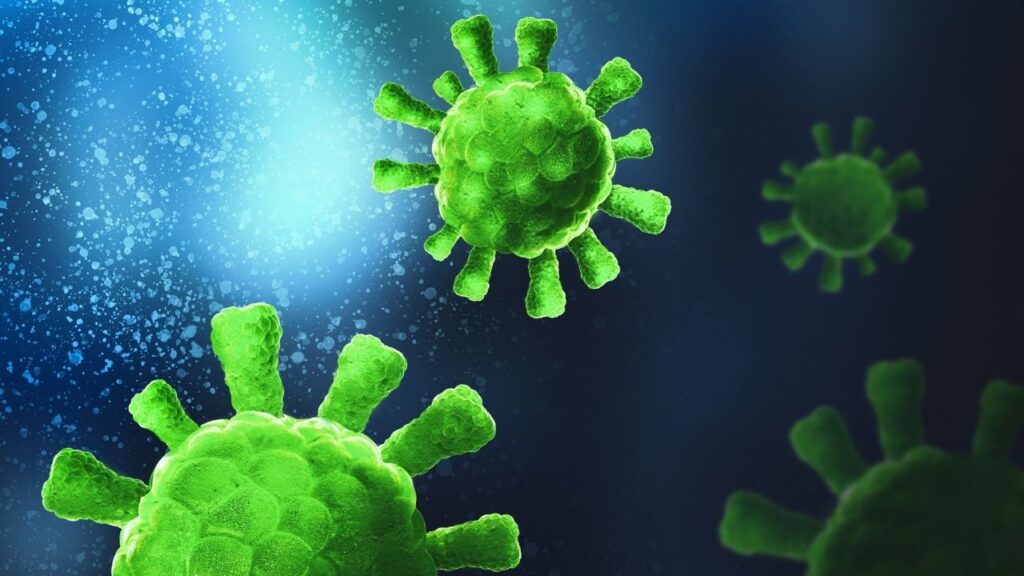Dog Cancer Prevention
Cancer cells grow due to a number of cellular changes including gene mutations and epigenetic (gene expression) factors. We cannot guarantee dog cancer prevention strategies will work, but we can influence our dog’s environment to help lower risk.
Key Takeaways
- There is no sure-fire way to prevent dogs from getting cancer, but there are things you can do to lower your dog’s risk.
- Cancer is what is known as a multifactorial disease, which means there is no one common cause of cancer in dogs. Many things must go wrong in the body for cancer to develop.
- There are vegetables that help with general health, but none that prevent all dog cancers from forming.
- Exercise itself does not directly prevent cancer in dogs, but it sure does help them live a healthy life and maintain a healthy weight, and that reduces the risk of cancer.
There’s No Magic Formula for Dog Cancer Prevention
There are no treatments, actions, or nutrition that prevent cancer entirely. There is no magic formula for how to prevent cancer in dogs. It’s extremely common, and there are no guarantees that you can remove all risk. But there are some things you can do that will lower the risk of cancer developing.
Research on Cancer Prevention Is Ongoing
Research is early in the process of identifying how our behaviors most impact cancer prevention.
There are some lifetime studies such as the Dog Aging Project,10 the Golden Retriever Lifetime Study,7 and the Norwegian Canine Cancer Registry.14
These studies are providing and will continue to provide a large amount of epidemiological data. Over time, we will continue to learn how to reduce the risk of cancer developing in our dogs.
What We Can Do for Our Dogs to Lower the Risk of Cancer Development
As dog parents, our goal is to minimize the risk of cancer to the best of our abilities. Utilizing likely prevention strategies may delay the onset of cancer or protect our dogs from developing cancers.
Many strategies are natural and part of everyday care. Let’s start with the first choice we make: which dog to bring into our family.
Choose Your Dog Based on Breed(s) and the Known Genetics within a Breed.
Certain breeds and family lines within a breed are more predisposed to certain cancers. One way to prevent cancer in dogs is to choose a dog less likely to develop it.
For example, The Golden Retriever Lifetime Study identified that the leading cause of cancer death in Goldens is hemangiosarcoma (blood vessel tumor) followed by lymphoma.13
In another example, osteosarcoma (bone cancer) is often seen in long-legged breeds of dogs.4
In some instances, the specific gene mutations that result in an increased risk for a given breed may be identifiable through genetic testing.
Remember that just because a dog has genetics that could lead to cancer does not mean they will automatically develop cancer.
Cancer is a multifactorial disease, and numerous epigenetic factors play a role in the development of cancer. (Epigenetic factors are things that change how or whether a gene is expressed.)
So, a dog with a mutation may not go on to develop disease. It is, however, more likely to develop disease than a dog without a mutation.
When bringing a new dog into your family, consider a mixed breed dog, as the genetics are likely to be more diverse.
Spay and Neuter! … Or Don’t
In America, we often spay and neuter our dogs for a number of reasons including helping to control dog populations, reducing roaming and other negative behaviors, and decreasing the risk of certain cancers:
- We’ve known for some time that the risk of developing and/or the age of onset of mammary (breast) cancer in female dogs increases with each heat.16,21
- Similarly, a relationship between neutering and a decrease in testicular (which may occur in ≥ 7% of unneutered male dogs) and perianal adenocarcinoma has been identified.14
- These cancers can be observed often in the veterinary profession. Mammary cancer in particular is seen at a relatively high frequency in unspayed females.21
On the other hand, spayed and neutered dogs may be more likely to develop other cancers, particularly lymphoma, osteosarcoma, and mast cell tumors. Some of these tendencies seem to depend on the age at surgery and/or breed of dog.2,3,9,16,20
Much of this research has been done on small populations and still in need of additional work.
What you ultimately do involves a long conversation with your veterinarian about your dog, the pros and cons, your dog’s breed risks, and what works for you.
Diet – Do Vegetables Matter?
The effect of diet in decreasing or increasing the risk of certain cancers has been controversial at best. Let’s look at some results studies have given us.
- The National Cancer Institute has a thorough summary of many proposed human dietary factors and risk of cancer, none of which show clearly defined relationships.15
- Notably as with humans, studies in dogs are often epidemiological in nature, which means they aren’t well controlled and rely on dog owners reporting from their memory. Hence cause and effect comparisons cannot be made.
In short, we don’t have enough evidence to clearly state that certain vegetables or other foods definitely prevent cancer. There are many reasons to eat vegetables, including general health.
In a study of female dogs in Spain with mammary cancer, red meat, but not chicken, was associated with an increased cancer risk. However the percentage of protein in the diet overall was not related in the study, so it’s hard to tell whether it was too much or too little protein, or the type of protein that was associated with more cancer.1
Also, Labrador retrievers with mast cell tumor had lower Vitamin D levels than controls, but both groups were within normal range, and dogs had similar dietary concentrations of Vitamin D.22 It’s hard to say from this study that vitamin D is definitely related to mast cell tumors based on these numbers.
Perhaps more important than what we eat is how healthy the gut is. About 70% of the immunes system is in our gastrointestinal tract and is directly related to gut biome (bacteria) health. As with other diseases, future research in this area may shed light on the relationship of food to overall health.
In any case, we do know the overall health of our dog is related to diet. An important key to dietary management is maintaining a complete and balanced diet for the appropriate life stage which meets or exceeds AAFCO standards, preferably demonstrated through a feeding trial.19
Additionally, although treats can be fun to give, they should constitute no more than 10% of the total daily caloric intake.18
Maintain Your Dog’s Healthy Weight
Maybe more important than what we feed our dog is how much we feed. Obesity is one of the leading diseases in both human and veterinary medicine.12
Obesity is well known in humans for increasing the risk of over 13 different types of cancers, and one study showed obese dogs had an increased bladder cancer risk.6
- Overweight dogs within the first year of life were found to be at increasing risk of mammary cancer.17
- An analysis of hospital data identified mast cell tumor to be more common in obese dogs and less common in underweight dogs.23
Obesity also increases other health risks including:
- diabetes mellitus,
- orthopedic disease,
- urinary incontinence, and
- cardiorespiratory disease.6
There are many reasons obesity contributes to disease.
- Obesity causes a chronic state of inflammation.12
- Over time chronic inflammation can lead to damaged DNA.
- Obesity is a hormonal disease.
- Excess fat cells cause secretions of cellular cytokines, insulin-like growth factors, and endocrine hormones, which all can play a role in cell cycle (cell division) regulation.6
A leaner dog also tends to live longer and healthier. In a study looking at 48 Labrador Retrievers, researchers paired up dogs, and fed one in each pair 25% less food. They followed the dogs over the course of their lives, and compared their health outcomes and longevity over time. Dogs who were fed 25% less food over the course of their lifetime had much better outcomes. They lived longer, and developed age-related chronic diseases later in life.25
Your veterinarian can help you determine your dog’s body condition, calorie intake, and general fitness, and then help develop a plan for weight loss if it’s necessary. You can also visit Pet Nutrition Alliance and use their online tools.
Exercise and Mental Stimulation
Exercise, physical and mental, is believed to increase our overall health as we age. There is no reason to think this is any different for our dog.
- Physical exercise helps to maintain weight and decrease inflammation.24
- It also reduces stress and therefore cortisol levels.24
- Exercise has been shown to protect cognitive health in aging dogs.24
Customized Vaccination Plans
Vaccines are administered to provide protection against diseases with high morbidity (many animals get sick) and/or high mortality (many animals die).
They are also administered to protect humans against zoonotic (spread between animals and humans) diseases such as leptospirosis and rabies.5
The American Animal Hospital Association (AAHA) periodically publishes guidance statements based on updates in research and procedures.
Currently AAHA recommends the use of Core for all animals and Lifestyle vaccines for populations at risk for certain diseases.
- Puppies, similar to children, undergo a series of vaccinations designed to optimize the immune response.
- AAHA advocates for the use of a 3-year Distemper, Adenovirus type 2, and Canine Parvovirus type 2 (DAPP) once a dog reaches one year of age and is up to date on vaccines.
This recommendation is based on information obtained from post-licensing data.
A similar recommendation is made for Rabies vaccination; however, rabies vaccines are also dictated by a given state’s legal requirements. Vaccines for bacterial disease often provide shorter immunity and should be given annually.
When Not to Vaccinate Your Dog
As important as vaccines can be, there are circumstances in which you should reconsider vaccines with your veterinarian’s help. For example, vaccines labels specifically say vaccines are to be given to a healthy animal. If your dog is sick, not acting right, has significant allergies (skin, ear, systemic) this may not be the time to vaccinate. Your veterinarian will advise you if this is the case.
Titers May Help Make Decisions
Some owners are reluctant to get vaccines, fearing that the immune system is over stimulated. However, the immune system is stimulated every day with multiple insults, so this may not be a concern.
If you are concerned, there are titer tests available for Distemper and Parvovirus. These tests will help your veterinarian determine whether your dog’s immune system is still primed to handle these diseases. The science surrounding these has not advanced much recently, but they may be helpful in some cases.
Routine Veterinary Care
Your veterinarian is a key part in keeping your dog healthy and those routine wellness exams are a way to bring up any of your concerns as well as a chance to identify any health issues with your dog.
Monitor lumps and bumps at home as well as having them monitored or tested at the veterinary clinic. Describe their color, size, texture and rate of growth. You can measure them at home by using a piece of string and marking with a sharpie.
Avoid Potential Carcinogen Exposure
There are good rules of thumb when engaging in our environment. Be mindful of what you spray in the yard and follow manufacturers’ guidelines no matter if it is a synthetic or natural product. If the label says the area has to be dry before dogs go out, make sure it is dry. Some animals will be more sensitive due to their genetic makeup or medical conditions and can be more adversely affected than others.
You can request that your house is skipped when neighborhood spraying occurs during the summer months. It does not control what is sprayed around your neighborhood but can affect your direct exposure. Wipe and wash those paws, legs, and bellies after taking a walk around areas in the neighborhood that have had their lawns sprayed.
Avoid tobacco/cigarette smoke exposure as secondhand smoke can be just as dangerous for dogs as it is for humans. Also minimize air fresheners sprays11 and paints and building materials with high VOC’s8 which can off gas into the house. Many products now have a low or no VOC label.
The Bottom Line on How to Prevent Cancer in Dogs
There is no all or nothing option, because none of us live in a bubble, and our dogs certainly do not.
Do what you can to lower your dog’s risk of cancer, and try to make peace with what you can’t control. Even doing one or two things to improve your dog’s risk profile will benefit your dog and provide you with peace of mind.
When you look back, even if your dog does get cancer, you will know that you did the best you could with what you knew at the time.
And hopefully we will learn more about what causes cancer, and therefore how we can prevent it, in the future. As we know better, we will do better for our future dogs.
- Alenza DP, Rutteman GR, Peña L, Beynen AC, Cuesta P. Relation between habitual diet and canine mammary tumors in a case-control study. Journal of Veterinary Internal Medicine. 1998;12(3):132-139. doi:10.1111/j.1939-1676.1998.tb02108.x
- Bryan JN, Keeler MR, Henry CJ, Bryan ME, Hahn AW, Caldwell CW. A population study of neutering status as a risk factor for canine prostate cancer. Prostate. 2007;67(11):1174-1181. doi:10.1002/pros.20590
- Cooley DM, Beranek BC, Schlittler DL, Glickman NW, Glickman LT, Waters DJ. Endogenous gonadal hormone exposure and bone sarcoma risk. Cancer Epidemiol Biomarkers Prev. 2002;11(11):1434-1440.
- Davis BW, Ostrander EA. Domestic Dogs and cancer research: A breed-based genomics approach. ILAR Journal. 2014;55(1):59-68. doi:10.1093/ilar/ilu017 Ellis J, Marziani E, Aziz C, et al.
- 2022 AAHA canine vaccination guidelines. AAHA. https://www.aaha.org/aaha-guidelines/2022-aaha-canine-vaccination-guidelines/home/. Published 2022. Accessed February 18, 2023.
- Fasshauer M, Blüher M. Adipokines in health and disease. Trends Pharmacol Sci. 2015;36(7):461-470. doi:10.1016/j.tips.2015.04.014
- Golden Retriever Lifetime Study. Morris Animal Foundation. https://www.morrisanimalfoundation.org/golden-retriever-lifetime-study. Accessed February 18, 2023.
- Halios CH, Landeg-Cox C, Lowther SD, Middleton A, Marczylo T, Dimitroulopoulou S. Chemicals in European residences – Part I: A review of emissions, concentrations and health effects of volatile organic compounds (VOCs). Sci Total Environ. 2022;839:156201. doi:10.1016/j.scitotenv.2022.156201
- Hart BL, Hart LA, Thigpen AP, Willits NH. Long-term health effects of neutering dogs: comparison of Labrador Retrievers with Golden Retrievers. PLoS One. 2014;9(7):e102241. Published 2014 Jul 14. doi:10.1371/journal.pone.0102241
- Home – Dog Aging Project. Dog Aging Project. https://dogagingproject.org/. Published May 11, 2022. Accessed February 18, 2023.
- Kokel D, Li Y, Qin J, Xue D. The nongenotoxic carcinogens naphthalene and para-dichlorobenzene suppress apoptosis in Caenorhabditis elegans. Nat Chem Biol. 2006;2(6):338-345. doi:10.1038/nchembio791
- Marchi PH, Vendramini THA, Perini MP, et al. Obesity, inflammation, and cancer in dogs: Review and perspectives. Front Vet Sci. 2022;9:1004122. Published 2022 Oct 3. doi:10.3389/fvets.2022.1004122
- Morris Animal Foundation launches research initiative into leading cause of cancer deaths. Morris Animal Foundation Announces Hemangiosarcoma Initiative. https://www.morrisanimalfoundation.org/article/morris-animal-foundation-launches-new-hemangiosaroma-initiative. Published October 15, 2022. Accessed February 16, 2023.
- Nødtvedt A, Gamlem H, Gunnes G, Grotmol T, Indrebø A, Moe L. Breed differences in the proportional morbidity of testicular tumours and distribution of histopathologic types in a population-based canine cancer registry. Vet Comp Oncol. 2011;9(1):45-54. doi:10.1111/j.1476-5829.2010.00231.x
- Risk factors: Diet. National Cancer Institute. https://www.cancer.gov/about-cancer/causes-prevention/risk/diet. Accessed February 18, 2023.
- Smith AN. The role of neutering in cancer development. Veterinary Clinics of North America: Small Animal Practice. 2014;44(5):965-975. doi:10.1016/j.cvsm.2014.06.003
- Sonnenschein EG, Glickman LT, Goldschmidt MH, McKee LJ. Body conformation, diet, and risk of breast cancer in pet dogs: a case-control study. Am J Epidemiol. 1991;133(7):694-703. doi:10.1093/oxfordjournals.aje.a115944
- Team CN. Clinical Nutrition Service Tufts University. Clinical Nutrition Service at Cummings School. https://vetnutrition.tufts.edu/. Accessed February 18, 2023.
- The Association of American Feed Control officials. AAFCO. https://www.aafco.org/. Published February 10, 2023. Accessed February 18, 2023.
- Torres de la Riva G, Hart BL, Farver TB, et al. Neutering dogs: effects on joint disorders and cancers in golden retrievers. PLoS One. 2013;8(2):e55937. doi:10.1371/journal.pone.0055937
- Vascellari M, Capello K, Carminato A, Zanardello C, Baioni E, Mutinelli F. Incidence of mammary tumors in the canine population living in the Veneto region (Northeastern Italy): Risk factors and similarities to human breast cancer. Prev Vet Med. 2016;126:183-189. doi:10.1016/j.prevetmed.2016.02.008
- Wakshlag JJ, Rassnick KM, Malone EK, et al. Cross-sectional study to investigate the association between vitamin D status and cutaneous mast cell tumours in Labrador retrievers. Br J Nutr. 2011;106 Suppl 1:S60-S63. doi:10.1017/S000711451100211X
- Weeth LP, Fascetti AJ, Kass PH, Suter SE, Santos AM, Delaney SJ. Prevalence of obese dogs in a population of dogs with cancer. American Journal of Veterinary Research. 2007;68(4):389-398. doi:10.2460/ajvr.68.4.389
- Yarborough S, Fitzpatrick A, Schwartz SM; Dog Aging Project Consortium. Evaluation of cognitive function in the Dog Aging Project: associations with baseline canine characteristics. Sci Rep. 2022;12(1):13316. Published 2022 Aug 25. doi:10.1038/s41598-022-15837-9
- Kealy RD;Lawler DF;Ballam JM;Mantz SL;Biery DN;Greeley EH;Lust G;Segre M;Smith GK;Stowe HD; Effects of diet restriction on life span and age-related changes in dogs. Journal of the American Veterinary Medical Association. https://pubmed.ncbi.nlm.nih.gov/11991408/. Published May 1, 2002. Accessed April 25, 2023.
Topics
Did You Find This Helpful? Share It with Your Pack!
Use the buttons to share what you learned on social media, download a PDF, print this out, or email it to your veterinarian.






